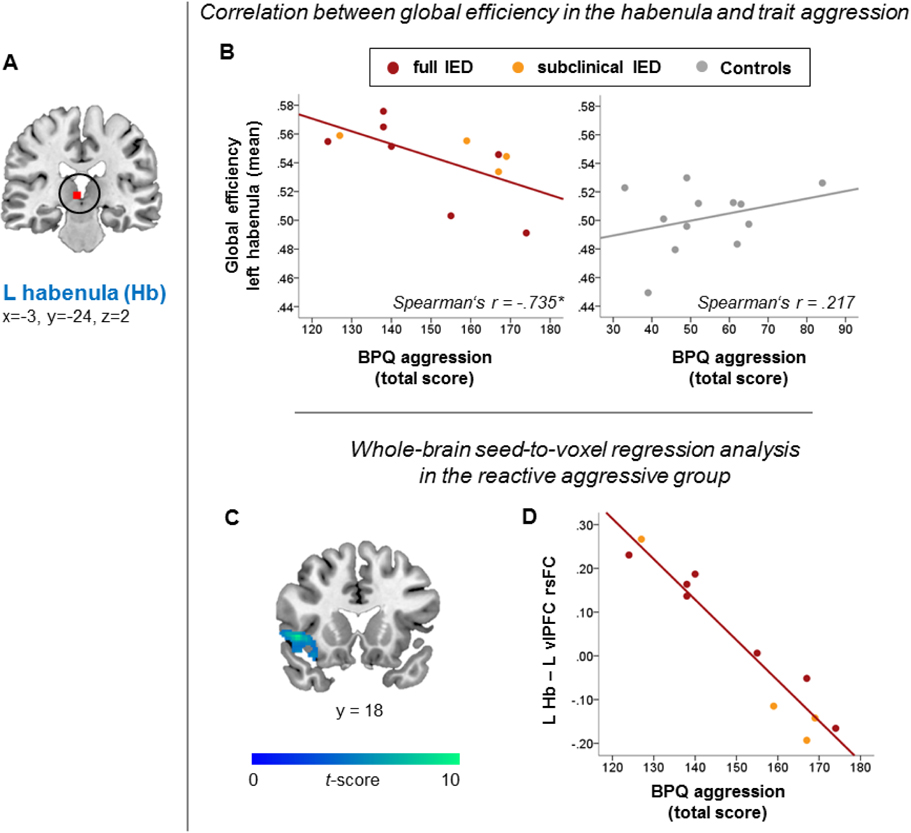Figure 1:
Whole-brain graph theory analyses. A: Reactive aggressive individuals showed higher global efficiency in the left habenula (Hb), the left thalamus (thal), the left dorso-lateral prefrontal cortex (dlPFC, Brodmann area [BA] 9), the right temporal pole (temp, pole, BA 38), and the superior temporal gyrus (STG, BA 22) relative to the control group. B: Reactive aggressive individuals showed lower clustering coefficient in the left precuneus (BA 7), the left dorso-medial prefrontal cortex (dmPFC, BA 10), and left occipital regions relative to the control group. Areas surviving significance at an FDR-corrected threshold are highlighted in boldface and in bar plots on the right. Error bars indicate +/− 2 standard errors. Network-level (summary measure averaged across all nodes): * p<.05; whole-brain node-level: ** p<.05 (FDR-corrected), # p<.001 uncorrected. Abbreviations: L = left, R= right.

